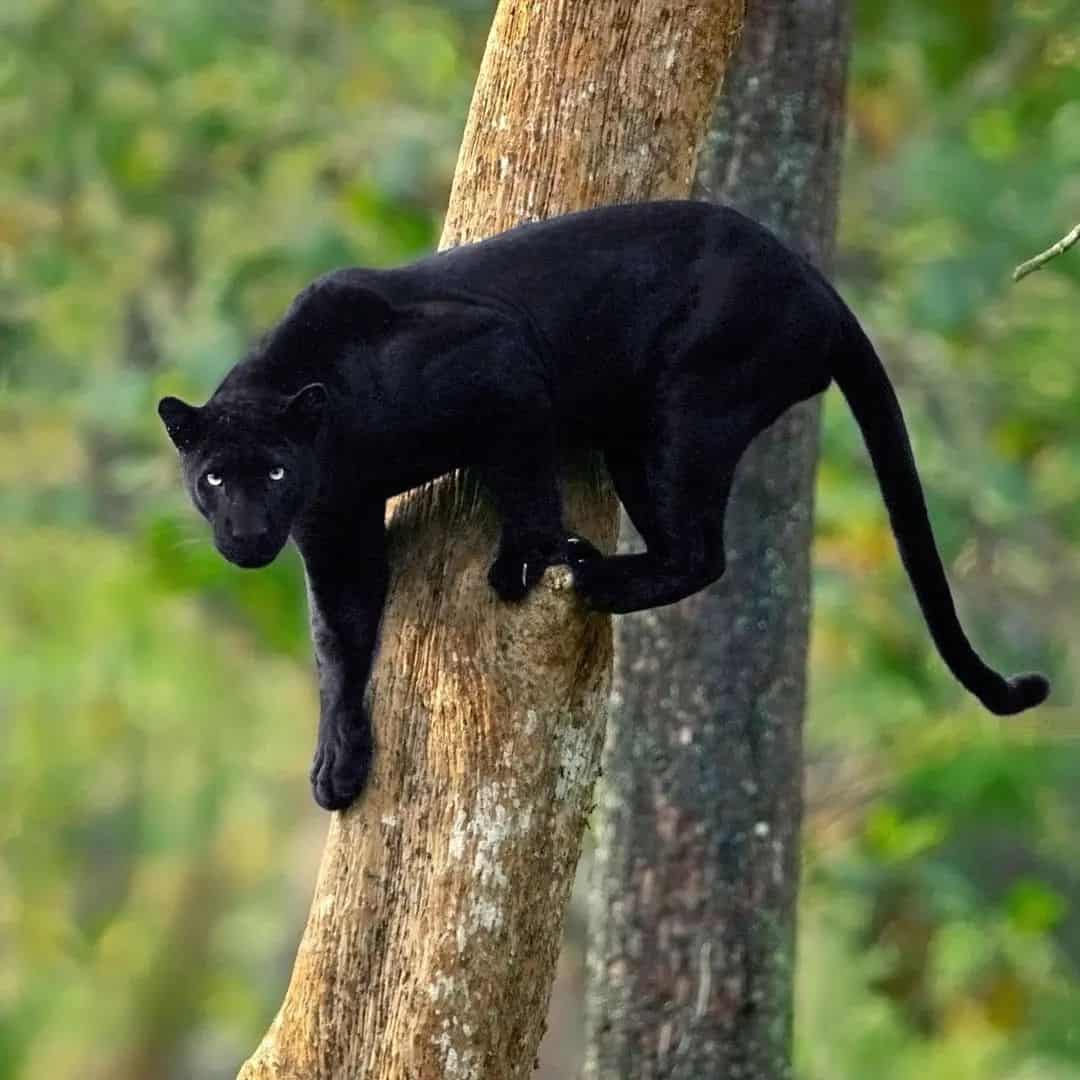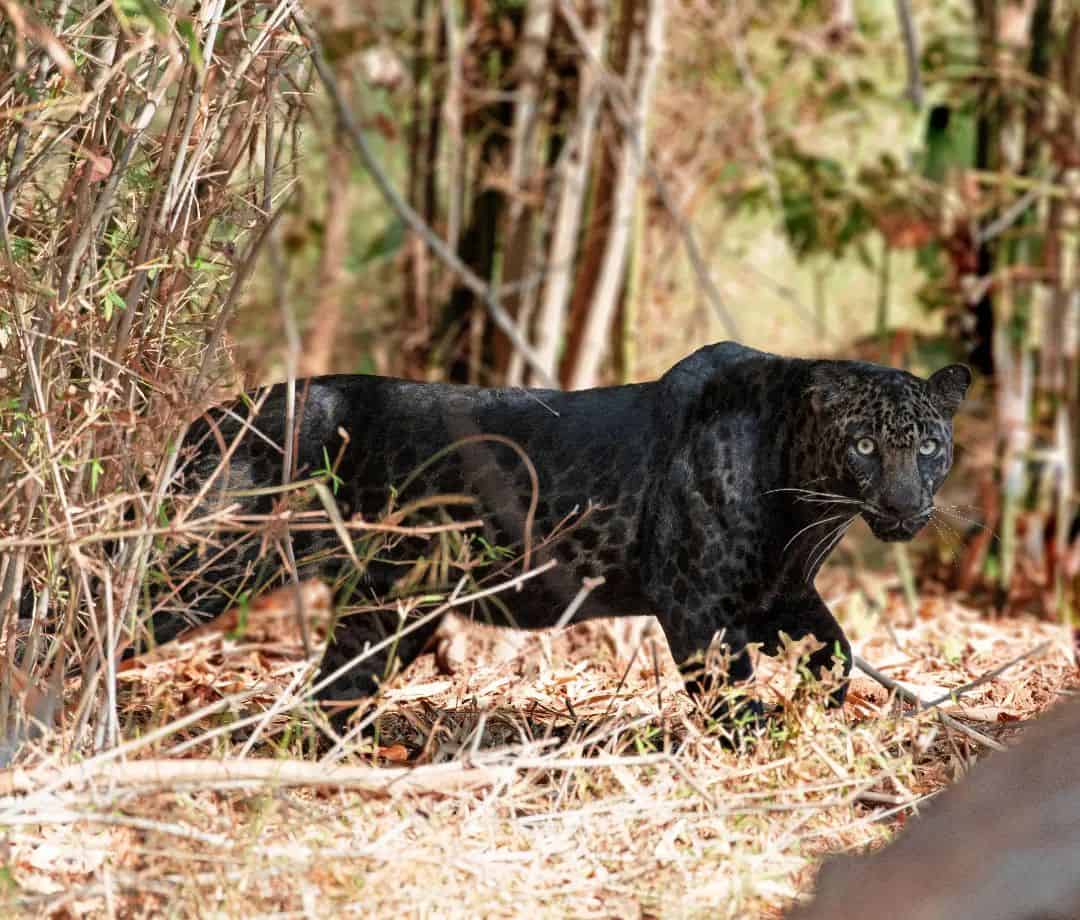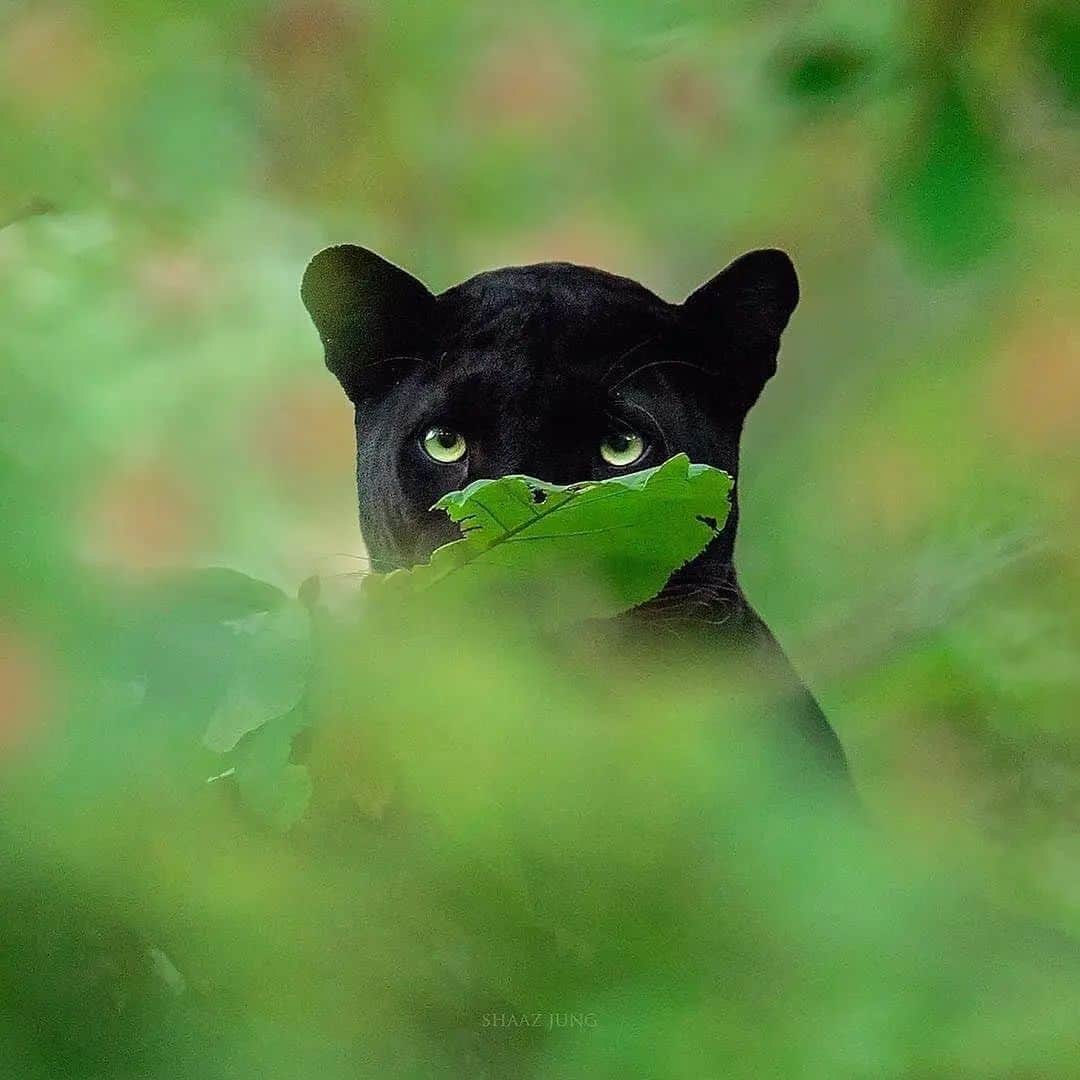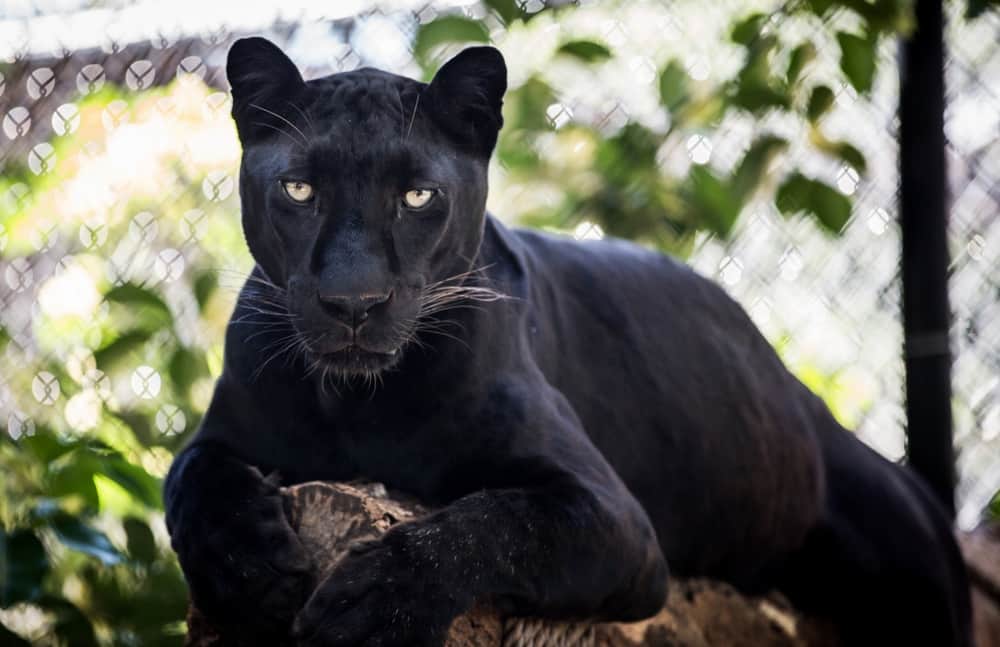In recent years, black panthers have seen an uptick in interest. Thanks to the MCU’s movie series and the Black Panther comics, people have started to get curious about the big cat behind the name of the greatest hero in Wakanda.
Black Panther, the superhero, maybe as fictional as Captain America. Unlike Cap’s moniker, black panthers themselves are real as can be. Are you a fan that’s curious about how fast these panthers are? Let’s look at the facts…
What is a black panther?
A black panther is not actually a real panther, contrary to popular belief. It’s actually not a melanistic version of a regular North American panther. Those have yet to be seen and documented.
Rather, the term “black panther” refers to jaguars, leopards, and (rarely) partially-melanistic tigers that have a melanistic mutation. This genetic mutation turns their fur darker or even black, though you can often see their stripes and spots as light reflects off it.
They still have the same genus and species names as their regularly-hued cat counterparts. However, they look so different that most people assume that they are their own species.
How fast can a black panther run?
How fast a panther can run depends on the type of cat it is. For the most part, black panthers of all types will be able to run as fast as 30 to 40 mph when they are sprinting after prey. However, that’s usually relegated to short bursts.
As apex predators, they use their super speeds to chase down almost any type of prey you could imagine. That includes wild antelopes, gazelles, as well as monkeys. But, you probably won’t ever see them charge at something.
Why? Because black panthers are notoriously stealthy, so by the time their prey notices that they are nearby, it’s already game over.
What do black panthers eat?
With all that chasing and stalking, you’re probably wondering what a black panther would target. In reality, it all depends on the species, the location of the panther, and what they have available to them.
Big cats are pretty much at the top of the food chain in their habitats, so they don’t discriminate much. Most big cats prefer to eat small mammals that are easy to catch, such as monkeys, antelope, and deer, or small mammals like wild rodents.
However, that’s not all they eat. These big cats are also huge fans of reptiles, fish, and even turtles. Their powerful jaws can break through almost any bones or shells they find. If it walks or crawls, they will definitely consider eating it.
1. Can black panthers eat plants?

It’s important to remember that all types of black panthers are obligate carnivores. They do not do well on a plant-based diet and will die if they do not get enough meat. However, that doesn’t mean that they won’t chomp on plants.
Certain panther species will seek out plants when their stomachs are sore. Some big cats also enjoy just chewing on things. So, plants can be that thing.
2. Do black panthers eat people?
Contrary to what people might have told you, the idea of a “man-eating panther” is fairly unrealistic. There have been rumors of big cats that prefer to hunt people, but there has never been a truly supported case where panthers actively hunt down people instead of other prey.
In most cases, attacks from big cats occur when humans encroach on their territory for too long or if they are provoked. With that said, they still might be opportunistic predators. People have been attacked, but that doesn’t mean we’re their primary food source.
3. Can you own a pet black panther?
Up until 2022, it was legal to own a pet black panther in several states. Was it a good idea? Nope. As we all remember from the hit show Tiger King, there were bad actors who kept black panthers of both species as well as tigers.
Truth be told, big cats belong in their natural habitat, away from humanity. They don’t do well with us around and cannot get the kind of care they need in captivity. A free panther is a happy panther!
Fun facts about black panthers
1. How does a black panther happen?
As we pointed out in the part above, black panthers are just regular cats with a genetic mutation. The black-pigmented fur trait is found in dominant alleles in jaguars, while other cat species will have it as a set of recessive alleles.
When a cat carries genes that result in black fur, it can pass it down to its cubs. Around 10 percent of all jaguars and leopard cats are black panthers, though they may also have siblings who didn’t inherit that trait.
There has been evidence that the panther’s particular environment can have an impact on whether they get born with darker fur. Dimmer-lit areas, such as deep jungles or swampland, are more likely to have melanistic leopards and jaguars.
Of course, if both of the cat’s parents are black panthers, you’ll be far more likely to have a black panther cub. This is true regardless of what environment the cat is currently in or where it grew up.
2. Are black panthers healthy?

When people hear the term “mutation,” they immediately get worried about an animal’s health. Mutations tend to come with a connotation that a large cat is unhealthy or that they are going to live a bad life.
People often worry that black panthers are heavily inbred or cancer-prone, like their Siberian tiger counterparts. And it’s true. Siberian tigers have a massively low lifespan and a high chance of deformities.
This isn’t really true with black panthers.
Black panthers simply have a change in their fur color, and it’s actually one that doesn’t harm their chances at life too badly. Unlike albino cats, which have a hard time blending into surroundings, black panthers can still hide and remain stealthy with black fur.
Unlike white tigers and other similar mutations, black panthers are not caused by inbreeding and do not have health problems associated with their mutation. This is a fairly common (but not totally common) natural occurrence that is often chalked up to natural selection.
3. Where do black panthers live?
This depends on the particular species of tiger, jaguar, or jaguar. Tigers can live in Asia and Africa. Jaguars, on the other hand, can be found in Southeast Asia, Africa, and South America. Basically, anywhere that you see tropical forests and rainforests are likely to house them.
You also might be able to find these big cats in savannah areas, mountains, and coastal scrubs. In other words, anywhere that there is a leopard, tiger, or jaguar population is fair game. Tigers do not become “full” black panthers but will have darker colorations as a result of this allele.
Black panthers are more likely to happen in Africa and Southeast Asia, but it’s not unheard-of for panther populations to sport black fur in South and Central America, either.
4. Can you breed black panthers in captivity?

Since big cats are starting to become endangered, many people are choosing to try to breed them in captivity. As of right now, there aren’t any major concentrated efforts to breed black panthers.
However, you can see them being born in zoos. Right now, there are six black panthers in the Assam Zoo. Two of those were born in captivity.
5. How much do black panthers travel?
If there is one thing that big cats are known for, it’s having large territories. Most black panthers can have a territory range as large as 200 to 250 square miles. So, they roam pretty far from the center of their region.
It’s also worth noting that they are notoriously territorial. They mark their territories by clawing bark on trees and spraying urine on nearby landmarks. The panther’s notoriously great sense of smell will pick up scents of others if they’re nearby. In that case, they may fight their rivals.
6. Do black panthers hunt in packs?
Unlike many other major predators (like wolves or hyenas), big cats are generally not communal animals. They are loners by default, which means that they do most of their hunts solo.
Unless in its mating season or time to rear some cubs, you are unlikely to see a pack of black panthers. Since even seeing a single leopard or jaguar is rare, seeing multiple with a black color coat is going to be a once-in-a-lifetime sighting.
Conclusion
You don’t need to be a Marvel fan to see why a warrior whose superpower collection includes super speed would get named Black Panther. These cats run just as fast as any other jaguar or leopard. Unless you have a fast car, you’re not going to be able to outrun them!
